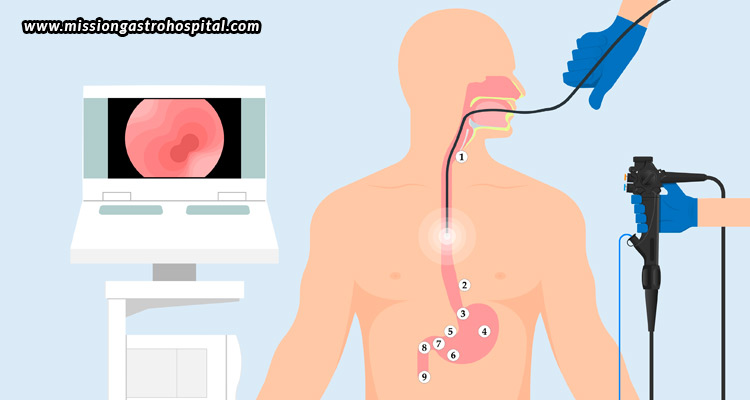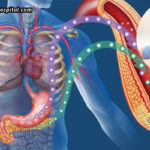Endoscopy is a lighthouse in the wide field of gastroenterology, providing insight into the complex inner workings of the gastrointestinal system. Endoscopic procedures play a critical role in the management of a variety of gastrointestinal (GI) diseases, from diagnosis to focused therapy, providing invaluable insights to both patients and physicians. The blog below acts as a road map for the field of endoscopy, explaining its many types, advantages, and the journey patients can expect throughout the procedure. This blog intends to demystify endoscopy by examining the subtleties of different procedures, giving readers a better understanding of the procedure’s significance in preserving gastrointestinal health. Every method, from endoscopic ultrasonography to upper GI endoscopy, has a distinct benefit and adds to the overall treatment and management of GI problems.
What is endoscopy?
Endoscopy, the mainstay of gastroenterology treatment, is the process of visualizing the gastrointestinal system by inserting a flexible tube into the body that is fitted with a camera and light source. Its main goals are to facilitate therapeutic treatments like polyp removal or stricture dilation, as well as to diagnose problems like ulcers, inflammation, and malignant growths. Endoscopic technology has changed over time, improving patient comfort and diagnostic capabilities. Innovations like video and capsule endoscopy, as well as the transition from rigid to flexible scopes, have revolutionized the discipline. The value of endoscopy is in its direct visualization of the gastrointestinal system, which makes it possible to identify anomalies early on, which is essential for prompt management and better patient outcomes. Endoscopy continues to be essential in gastroenterological care as it helps with treatment choices and may even stop the spread of diseases like colorectal cancer. This highlights the important role endoscopy plays in maintaining gastrointestinal health and well-being.
Types of endoscopic procedures
- Upper GI Endoscopy: A flexible tube fitted with a camera and light source is inserted through the mouth during an upper gastrointestinal endoscopy to examine the oesophagus, stomach, and duodenum. It is frequently used to look into symptoms including stomach bleeding, swallowing difficulties, or abdominal pain, and to identify anomalies such as ulcers, inflammation, or tumours. Furthermore, tissue samples can be obtained for a biopsy during the procedure, aiding in the diagnosis of various conditions.
- Colonoscopy: In order to inspect the whole colon and rectum, a flexible tube equipped with a camera and light source is inserted into the rectum during a colonoscopy operation. It is essential for the detection of polyps, inflammatory bowel disease, and colorectal bleeding in addition to colorectal cancer. Colonoscopy is necessary for monitoring in patients with a history of colorectal disorders or polyps, as well as for screening those who are at risk for colorectal cancer. This procedure also allows for tissue samples to be taken for biopsy, which helps with early identification and treatment.
- Flexible Sigmoidoscopy: Flexible sigmoidoscopy also focuses on inspecting the rectum and sigmoid colon, but with advantages that include a quicker recovery period, less discomfort, and no anaesthesia required. Nevertheless, compared to colonoscopy, its evaluation of the whole colon is less thorough since its reach is restricted to the distal portion of the colon. Flexible sigmoidoscopy is frequently used to check people over 50 for colorectal cancer or to look into symptoms like changes in bowel habits or rectal bleeding.
- Endoscopic Retrograde Cholangiopancreatography: This is a specialized procedure that is used to identify conditions pertaining to the pancreas and bile ducts by inserting an endoscope into the mouth. Pancreatic tumours, bile duct strictures, and gallstones are just a few of the disorders that can be identified by the procedure. Contrast dye is injected into the ducts during the treatment, and X-rays are obtained to identify any anomalies. During ERCP, therapeutic procedures like stent implantation or stone removal may also be carried out if required. However, despite its effectiveness, ERCP involves certain risks, including bleeding, infection, and pancreatitis.
- Endoscopic Ultrasound: Endoscopic Ultrasound is a diagnostic technique that uses ultrasound and endoscopy to assess the gastrointestinal system and surrounding tissues. It entails passing an endoscope through the mouth or rectum with a connected ultrasonic probe to view the GI tract’s wall layers as well as any neighbouring organs such as the pancreas, liver, or lymph nodes. EUS is useful for directing therapeutic treatments like fine-needle aspiration for tissue sampling, assessing lesions seen on imaging tests, and identifying and staging gastrointestinal malignancies. In order to provide precise diagnosis and treatment planning in gastroenterology, EUS enables high-resolution imaging with minimal invasiveness.
Benefits of endoscopy
Endoscopy is a shining example of innovation in gastrointestinal care, providing a wealth of advantages that transform diagnosis and therapy. First off, patients have alternatives to traditional surgery due to its less invasive nature, which also reduces discomfort and speeds up recovery. Furthermore, its accuracy in identifying and evaluating GI problems guarantees precise diagnoses, opening the door for focused treatment plans. In addition, endoscopy’s therapeutic applications, which include tissue sampling, stricture dilatation, and polyp removal, support efficient therapy methods in addition to diagnosis. Through the combination of diagnostic precision and therapeutic effectiveness, endoscopy becomes a vital instrument in the gastroenterology care toolbox, ushering in a new age of patient-centered, minimally invasive treatment paradigms.
What to expect before, during, and after endoscopy
Patients need to go through preparation procedures including food restrictions and bowel cleaning before going in for an endoscopy; they are especially important for colonoscopies in order to guarantee the best possible visualization of the colon. Patients are given anaesthesia to make the treatment comfortable, after which a flexible tube containing a camera and light source is introduced through the mouth or rectum to observe the gastrointestinal system. When the endoscope passes through the digestive system during the examination, patients could feel a little pressure or discomfort. Although minor sore throats and bloating are frequent side effects that normally go away, patients should be wary of indicators of problems such as severe stomach discomfort or bleeding, which call for immediate medical treatment. Patients may traverse the endoscopic process with confidence and peace of mind if they prepare well for the treatment, get attentive care throughout the examination, and have watchful post-surgery monitoring.
With its window into the inner workings of the gastrointestinal tract, endoscopy is a cornerstone in the field of gastroenterological treatment. Patients can achieve maximum gastrointestinal health and well-being by receiving customized treatment programmes and precise diagnoses through a variety of endoscopic procedures. Patients and healthcare professionals may travel the path to GI health with clarity and confidence if they are aware of the types, advantages, and procedural expectations associated with endoscopy. Mission Gastro in Ahmedabad gives patients looking for top-notch care access to the most skilled endoscopists who are compassionate and knowledgeable about detecting and treating GI disorders. Mission Gastro guarantees that patients receive individualized attention and complete solutions for their gastrointestinal difficulties by utilizing state-of-the-art technologies in conjunction with a dedication to patient-centered treatment. Put your faith in the best endoscopy doctor in Ahmedabad at Mission Gastro for excellence in endoscopic procedures and a path to lasting digestive wellness.








